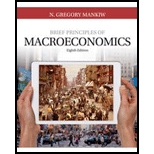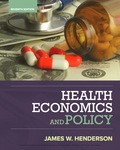
Subpart (a):
To draw:The
Subpart (b):
The quantity of procedure required if consumers are ready to pay $20 per procedure. Also, to find whether the number of procedures performed will maximize the overall surplus, if the optimal rate for each procedure is truly $100, and individuals have health insurance.
Subpart (c):
Whether the usage of care are considered to be excessive when the economists blame the health insurance system for these usage of medical care.
Subpart (d):
The policies that can prevent the excessive usage of medical care.
Trending nowThis is a popular solution!

Chapter 7 Solutions
Bundle: Principles of Macroeconomics, Loose-leaf Version, 8th + LMS Integrated Aplia, 1 term Printed Access Card
- Critically analyse the five (5) characteristics of Ubuntu and provide examples of how they apply to the National Health Insurance (NHI) in South Africa.arrow_forwardCritically analyse the five (5) characteristics of Ubuntu and provide examples of how they apply to the National Health Insurance (NHI) in South Africa.arrow_forwardOutline the nine (9) consumer rights as specified in the Consumer Rights Act in South Africa.arrow_forward
- In what ways could you show the attractiveness of Philippines in the form of videos/campaigns to foreign investors? Cite 10 examples.arrow_forwardExplain the following terms and provide an example for each term: • Corruption • Fraud • Briberyarrow_forwardIn what ways could you show the attractiveness of a country in the form of videos/campaigns?arrow_forward
 Principles of Economics 2eEconomicsISBN:9781947172364Author:Steven A. Greenlaw; David ShapiroPublisher:OpenStax
Principles of Economics 2eEconomicsISBN:9781947172364Author:Steven A. Greenlaw; David ShapiroPublisher:OpenStax
 Economics (MindTap Course List)EconomicsISBN:9781337617383Author:Roger A. ArnoldPublisher:Cengage Learning
Economics (MindTap Course List)EconomicsISBN:9781337617383Author:Roger A. ArnoldPublisher:Cengage Learning






